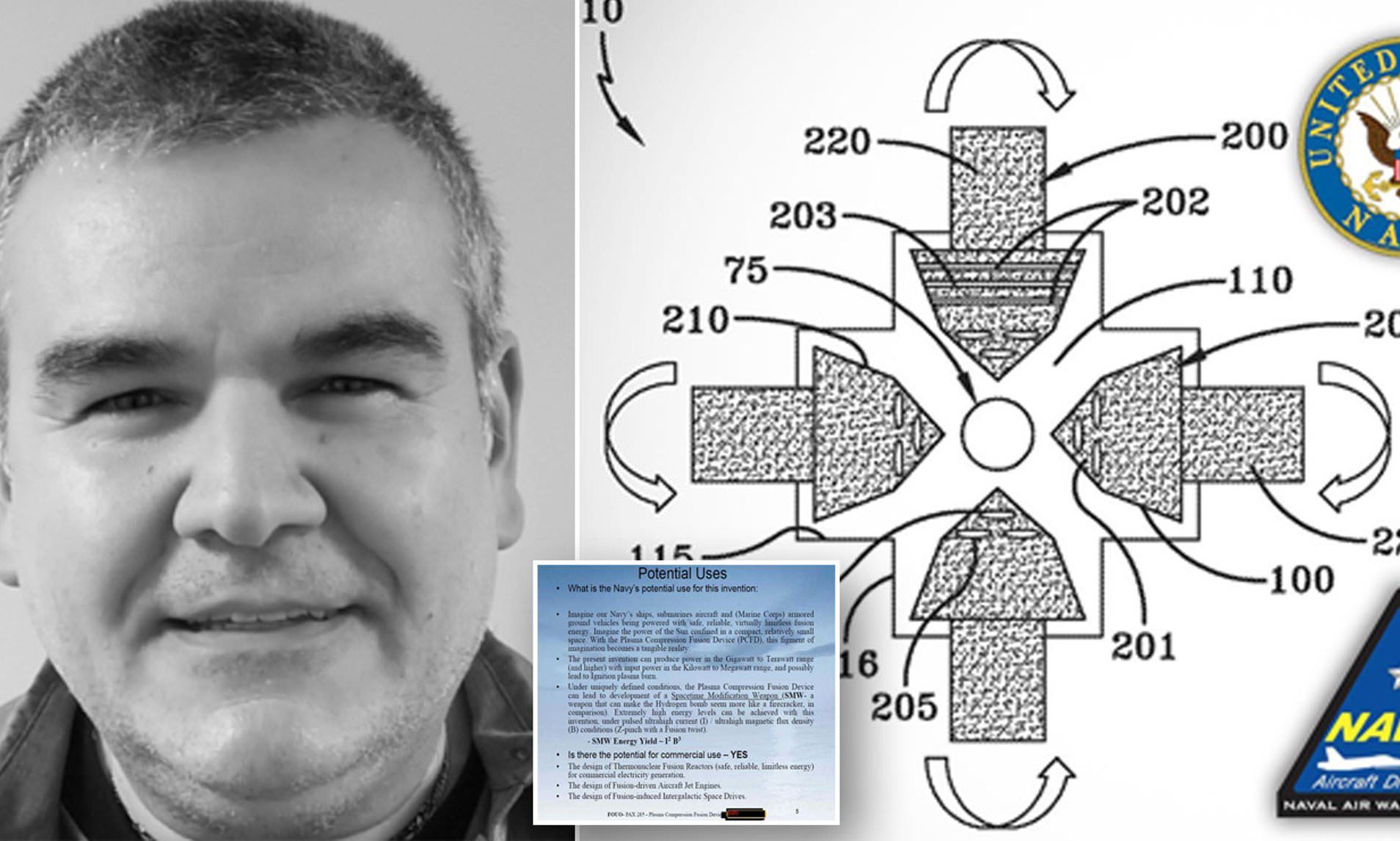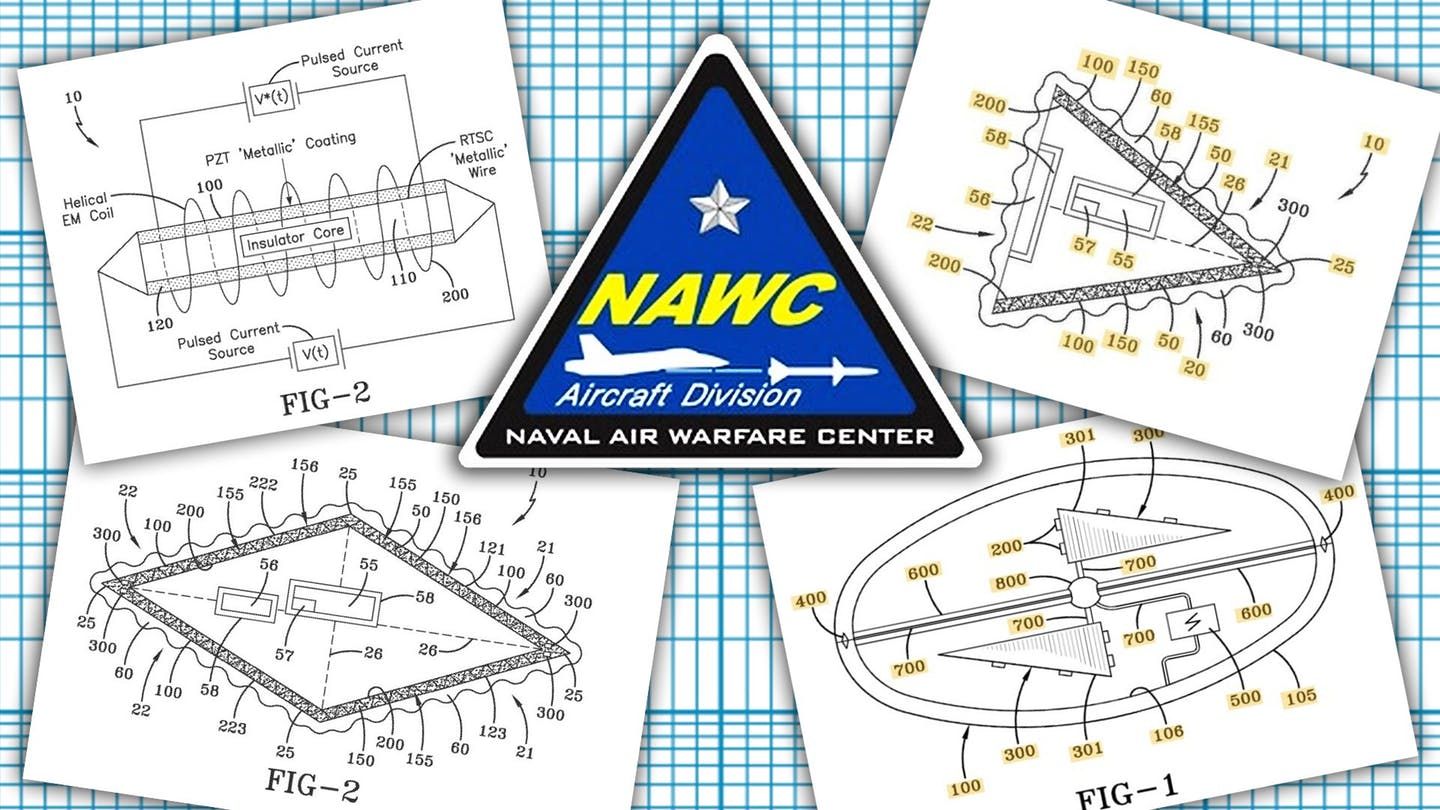UFO Tech That Alters Space-Time Is “Operable” Says US Navy Tech Officer
Article by Arjun Walia March 16, 2021 (collective-evolution.com)
• According to Freedom of information responses to The Drive website, two Navy patents – the room temperature superconductor (RTSC) and the high-energy electromagnetic field generator (HEEMFG) – may in fact already be in operation in some manner. The inventor Salvatore Pais (pictured above), Navy patent attorney Mark O. Glut, and the US Naval Aviation Enterprise’s Chief Technology Officer Dr. James Sheehy, all assert that these inventions are not only enabled, but operable.
• Inventor Salvatore Pais presented a paper, “Room Temperature Superconducting System for Use on a Hybrid Aerospace-Undersea Craft” (HUAC) at the 2019 American Institute of Aeronautics and Astronautics SciTech Forum in San Diego. The hybrid aerospace-undersea craft (HAUC) can function as a submersible craft capable of extreme underwater speeds and enhanced aerial/underwater stealth capabilities. The room temperature superconductor and high energy electromagnetic fields “enable (the HUAC’s) unbelievable speed and maneuverability.”
• The HUAC craft employs an inertial mass modification device which allows it to move with great ease through the air/space/water mediums, by being enclosed in a vacuum/plasma bubble/sheath to alter space-time around the craft. “Artificially generated high energy electromagnetic fields, such as those generated with a high energy electromagnetic field generator (HEEMFG), interact strongly with the vacuum energy state,” reads Pais’ paper. “Matter, energy, and spacetime are all emergent constructs which arise out of the fundamental framework that is the vacuum energy state.”
• Placing a craft within a space that is moving faster than the speed of light is known as the ‘Alcubierre Drive’. The craft itself does not have to travel at the speed of light by its own propulsion system. “By creating a “warp bubble” that expands space on one side of a spaceship and contracts it on the other, the spaceship will be pushed away from the Earth and pulled towards a distant star by space-time itself,” notes Dr. Miguel Alcubierre.
• We don’t need to break the speed of light in order to become an interstellar species, says Gianni Martire, a scientist at Applied Physics. “Our warp drive research has the potential to unite us all.” Martire and his team at Applied Physics recently announced the development of the first model of physical warp drives. The team’s study received the blessing of the esteemed theoretical physicist Miguel Alcubierre, with their findings being published in the peer-reviewed journal, Classical and Quantum Gravity.
• Recently retired Director of Advanced Systems at Lockheed Skunkworks Steve Justice has also alluded to the idea that this type of technology is real. He has been quite outspoken about the “black budget” world, and crafts that can mimic the capabilities that are observed in UFOs/UAPs. “We have glimpses of how the physics of this works, but we need to harvest technologies from the Science Division to realize the capability,” said Justice.
• Could some of these advanced technologies have been developed and discovered from reverse-engineering crashed UFOs? Apollo 14 astronaut Dr. Edgar Mitchell said, “Yes there have been crashed craft, and bodies recovered.” NASA astronaut Dr. Brian O’Leary stated, “Much to my surprise, these (advanced technology) concepts have been proven in hundreds of laboratories around the world, but have not really seen the light of day.”
• This type of technology could theoretically send humanity to the stars and beyond, or be weaponized for defense purposes. But it can also provide a clean, free, and unlimited source of energy to free humanity from our current state of scarcity. We have to change our underlying way of thinking as to how we should apply these technologies to change the human experience for the better.
• Why do we choose to give our power over to those who do not have humanity’s best interests at heart? Eventually, people will have to take matters into their own hands at a grassroots level and create new solutions instead of constantly looking towards government and other ‘powerful’ entities. “It is now highly feasible to take care of everybody on Earth at a higher standard of living than any have ever known. It no longer has to be you or me. Selfishness is unnecessary. War is obsolete. It is a matter of converting our high technology from weaponry to livingry.” – Buckminister Fuller

I was recently scrolling through the twitter feed of Christopher Mellon, the

former Deputy Assistant Defense Secretary for Intelligence from 1997 to 2002. In doing so I came across an interesting post from The Drive regarding documents they received via the Freedom of Information Act (FOIA) regarding a “spacetime modification weapon” developed for the U.S. Navy which, apparently, has already gone through experimental testing. This in turn led me to evidence suggesting that other revolutionary type of technology, that could no doubt be used to change the world for the better in a major way, was already “operable.”
 On a side note, Mellon is one of many with such a background who has been
On a side note, Mellon is one of many with such a background who has been

speaking up about and creating awareness regarding the reality of the UFO phenomenon for a few years now. He was part of the “mainstream” UFO disclosure initiative “To The Stars“, which seems to be, in my opinion, a Department of Defense mainstream UFO disclosure initiative. He has left that initiative, which has been heavily scrutinized by UFO researchers who feel it portrays the phenomenon with a threat narrative attached to it when there is no need/evidence to do so.

Back to the topic at hand. In 2018, inventor Salvatore Cezar Pais presented a paper, “Room Temperature Superconducting System for Use on a Hybrid Aerospace Undersea Craft” at the 2019 American Institute of Aeronautics and Astronautics SciTech Forum in San Diego in January 2019. In the paper, Pais writes that “the achievement of room temperature superconductivity (RTSC) represents a highly disruptive technology, capable of a total paradigm change in Science and Technology,” and adds that its “military and commercial value is considerable.”
the paper, Pais writes that “the achievement of room temperature superconductivity (RTSC) represents a highly disruptive technology, capable of a total paradigm change in Science and Technology,” and adds that its “military and commercial value is considerable.”
The paper states that: “The subject matter of this paper describes the design of an active room temperature superconductor, to be incorporated within the Hybrid Aerospace-Undersea Craft (HAUC), described in a recently published paper, “A Hybrid craft using an inertial mass modification device.”
“The granted patent application for the HAUC describes this craft, with its capabilities to alter space-time around the craft: “It is possible to envision hybrid aerospace-undersea craft (HAUC), which can function as a submersible craft capable of extreme underwater speeds (lack of water-skin friction) and enhanced aerial/underwater stealth capabilities (non-linear scattering of RF and sonar signals). This hybrid craft would move with great ease through the air/space/water mediums, by being enclosed in a Vacuum/plasma bubble/sheath, due to the coupled effects of EM field-induced air/water particles repulsion and Vacuum energy polarization.”
FAIR USE NOTICE: This page contains copyrighted material the use of which has not been specifically authorized by the copyright owner. ExoNews.org distributes this material for the purpose of news reporting, educational research, comment and criticism, constituting Fair Use under 17 U.S.C § 107. Please contact the Editor at ExoNews with any copyright issue.




 Whether any of that is true or not, it is interesting to note that in 2019, the US Navy’s Naval Air Warfare Center Aircraft Division (NAWCAD) filed a number of seemingly out of this world patents that could, in theory, revolutionize not only military aviation, but just about everything.
Whether any of that is true or not, it is interesting to note that in 2019, the US Navy’s Naval Air Warfare Center Aircraft Division (NAWCAD) filed a number of seemingly out of this world patents that could, in theory, revolutionize not only military aviation, but just about everything.





